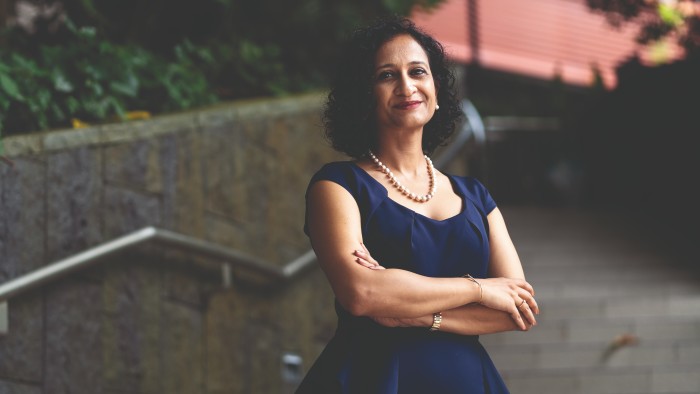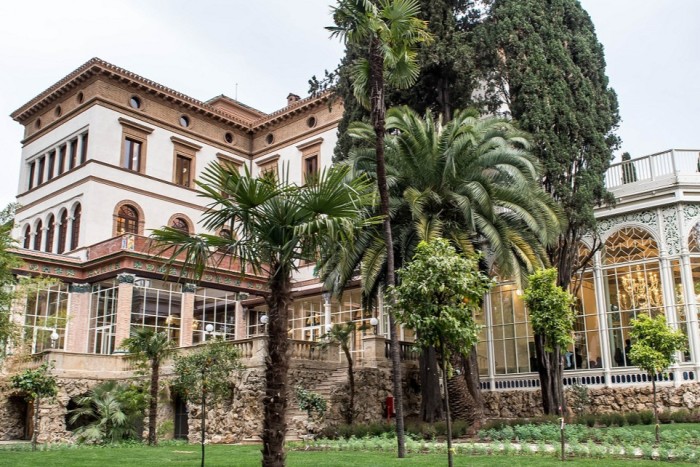Business schools steer a difficult course on carbon

Roula Khalaf, Editor of the FT, selects her favourite stories in this weekly newsletter.
Before she moved from Singapore to Paris this summer, to become Essec’s dean of pre-experience programmes, Professor Aarti Ramaswami weighed all the pros and cons of the options for moving her family and belongings between two continents — even to the point of tabulating it in a spreadsheet.
Ultimately she did take the plane, but says she wants her students to be just as mindful: weighing up the alternatives and carbon footprints before making their travel choices.
Essec has committed to reducing the carbon impact of student travel on programmes including its masters in management (MiM) by 30 per cent in three years.
“Part of the student experience and journey is having an international experience, and yet student travel and mobility is one of the higher sources of carbon footprint within the school,” says Ramaswami. “We’re making very conscious efforts to reduce that.”
Those efforts include a “climate fresco” workshop that most students complete at the beginning of their programmes. Ramaswami also plans to incentivise students to choose more local destinations for field trips, exchanges and internships, giving a larger budget to students who choose locations that require less travel.
But what is unlikely to change, says Ramaswami, is the option to spend study time at another campus — Essec has two in France, one in Morocco and one in Singapore. “It’s why many students choose to come to Essec, so we can’t put a straitjacket on them,” she says.
The pressure on business schools to reduce greenhouse gas emissions caused by travel is coming from all directions. There are national climate targets, universities and schools have their own sustainability strategies and there is “bottom-up” activism from student climate clubs. Faculty are also examining their own flying habits before signing up for academic conferences.
But the near-cessation of foreign travel during the pandemic also led to significant pent-up demand once restrictions were lifted — so-called “revenge travel”.
FT Masters in Management ranking 2022 — top 100

Find out which schools are in our ranking of Masters in Management degrees. Learn how the table was compiled and read the rest of our coverage at ft.com/mim.
That poses a dilemma for all higher education institutions which market their programmes as “international”, but also need to demonstrate their commitment to carbon neutrality. A survey of 44 UK universities earlier this year found 53 per cent not considering changing student destinations for outward studies and work placements, while 46 per cent say they have already made, or are considering, such a change.
The story is similar among business schools. At ESCP, with six campuses across Europe, Léon Laulusa, dean for academic and international affairs, says MiM students will continue to have the opportunity to work abroad for the internship phase of the programme, because they still express a strong interest in international experience. In 2021, 90 per cent of ESCP students undertook an internship outside their home country — up from 81 per cent in 2020 but, more significantly, above pre-pandemic numbers too.
“We’ve noticed students today are more eager to go far away,” says Laulusa. “We’ve never received as many requests for exchange programmes outside Europe — to Asia, the US and South America.”
Some schools are leaning into increased demand. At Neoma in France, dean Delphine Manceau says her school will “continue to defend its commitment to international experience”. This year, Neoma has added another 18 academic partners to its network of almost 400 universities and schools around the world that MiM students can visit on academic exchanges. It is also offering masters students access to its worldwide network of incubators, which gives young entrepreneurs the chance to pursue their business idea abroad for an extra six months. Neoma encourages students to travel by train rather than by plane if possible, and runs events to raise awareness of the issue.
“The desire to travel abroad to study is still there,” agrees Céline Foss, programme director at Grenoble Ecole de Management. “The attraction of international study trips remains high and a valuable inclusion in the MiM, both for academic and cultural reasons,” she says. However, at Grenoble, study trips must be taken regionally and flights are only approved if rail is impractical.
Travel remains an essential part of the educational journey, says Anna Cockroft, director of masters programmes at Esade in Barcelona. “For a global mindset and skillset, students need to explore different cultures and to come together on different levels through study abroad,” she says. “Recruiters continue to value profiles with the capacity to adapt easily to different environments, with the flexibility to travel and communicate across the globe.”
International study trips are optional but popular with students who see them as a highlight of the year, she adds.
Back at Essec, Ramaswami says she believes squaring student demand for travel with carbon commitments is less a problem than a valuable exercise. “Every school is contending with this challenge of balancing the pedagogical goals, the cultural experience and finding a sustainable solution,” she says. “But it’s important to be continuously challenged by our students, alumni, business partners and employees. It’s what will keep us relevant.”
Comments